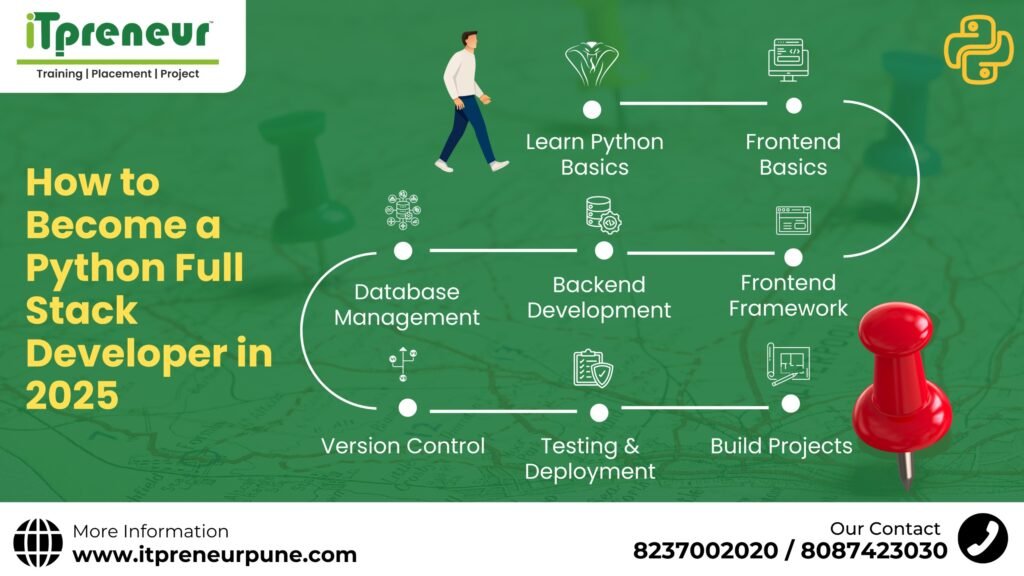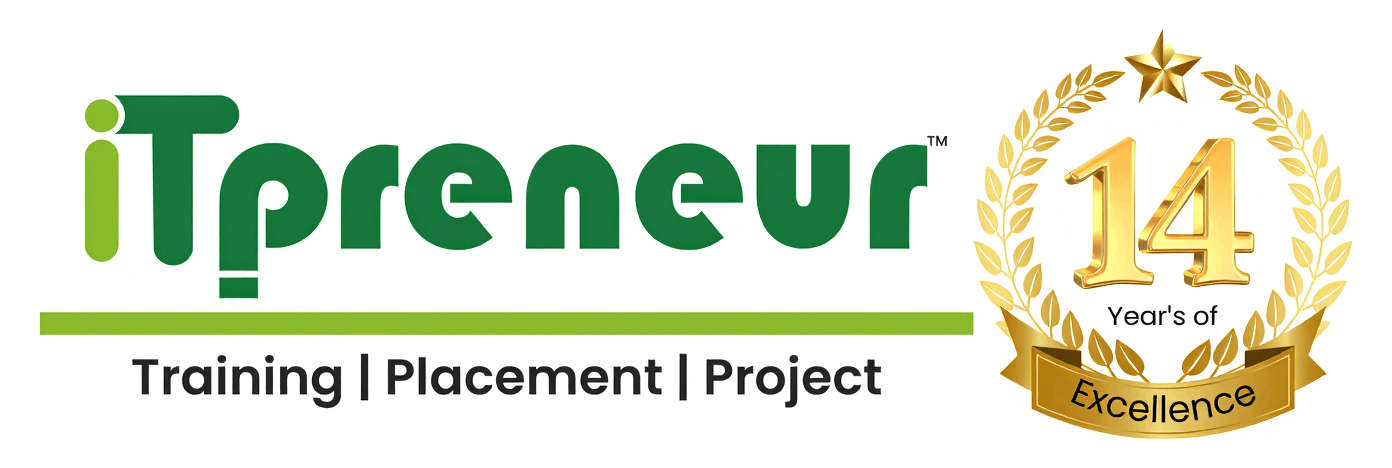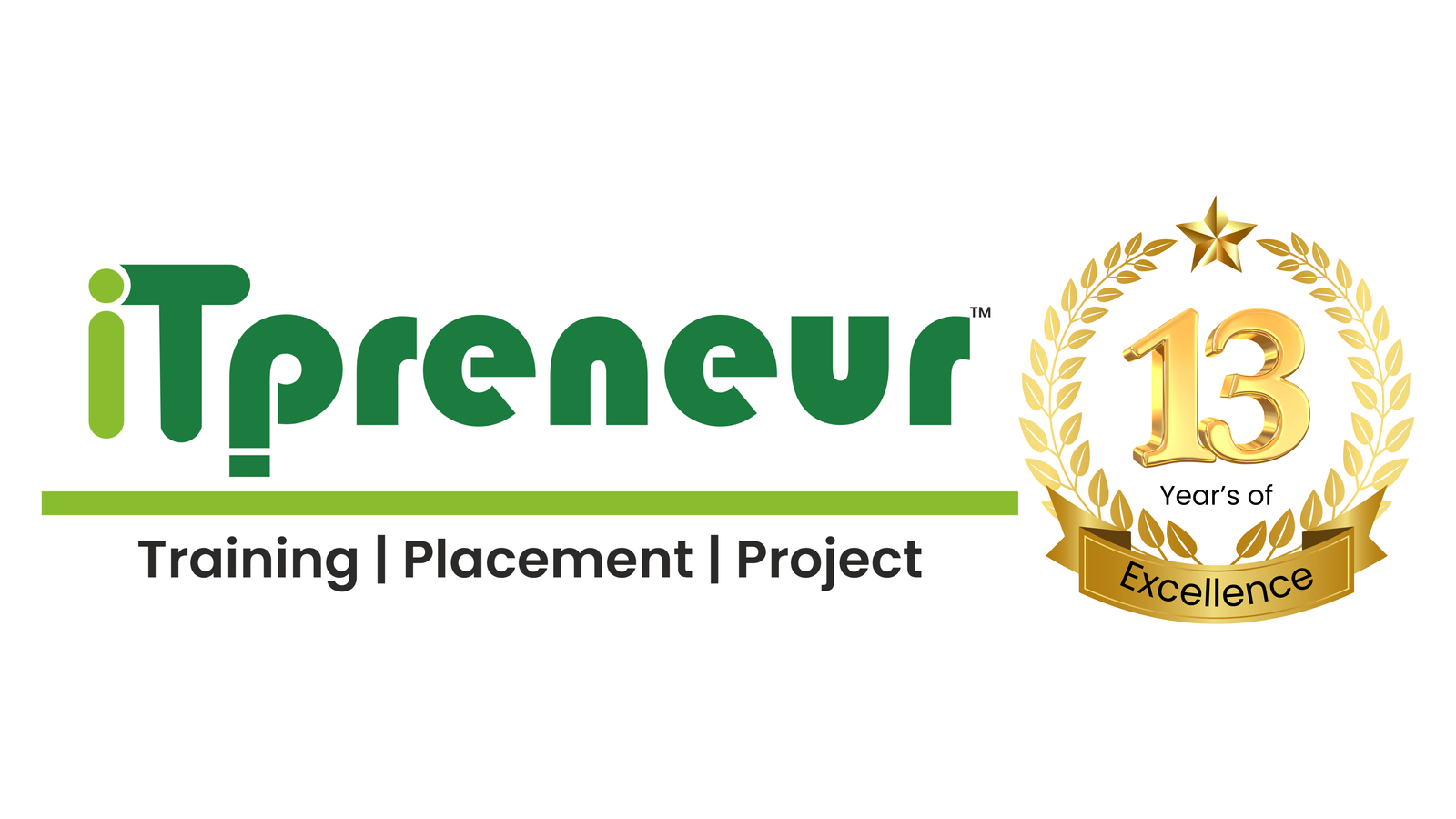Roadmap for Python Full Stack Development
In today’s digital landscape, the demand for skilled full-stack developers is at an all-time high. Python, being one of the most versatile and beginner-friendly programming languages, has become a top choice for aspiring developers. This blog outlines a clear roadmap for mastering Python Full Stack Development, breaking it down into actionable steps.

Step 1: Learn Python Basics
The foundation of your journey begins with understanding Python syntax and core concepts. Start by learning:
- Variables and Data Types
- Conditional Statements and Loops
- Functions and Modules
- File Handling
💡 Tip: Use resources like online tutorials, coding platforms, and exercises to build your foundational knowledge.
Step 2: Frontend Basics
To become a full-stack developer, mastering the frontend is essential. Learn the core web technologies:
- HTML: Structure of web pages
- CSS: Styling and layout
- JavaScript: Adding interactivity to web pages
💡 Tip: Focus on building simple static websites to practice.
Step 3: Database Management
Understanding how to store, retrieve, and manage data is critical. Learn about:
- Relational Databases (SQL)
- NoSQL Databases (MongoDB)
- Writing efficient queries and integrating databases into your applications
💡 Tip: Practice designing and implementing database schemas for small projects.
Step 4: Backend Development
Once you’re comfortable with Python, move on to backend development. Learn:
- Flask or Django: Python web frameworks for creating APIs and server-side logic
- RESTful APIs: Connecting the frontend with the backend
- Authentication and Security
💡 Tip: Start by creating a basic CRUD application to understand backend operations.
Step 5: Frontend Framework
Modern web applications require dynamic and responsive designs. Learn a frontend framework like:
- React.js
- Vue.js
- Angular
💡 Tip: Integrate your frontend framework with your Python backend for a complete full-stack experience.
Step 6: Version Control
Version control systems are essential for managing code changes and collaboration. Learn to use:
- Git and GitHub for version control and repository hosting
💡 Tip: Practice by contributing to open-source projects or managing your own codebase.
Step 7: Testing & Deployment
Learn to test and deploy your applications effectively:
- Unit Testing: Writing tests for individual components
- Deployment: Using platforms like AWS, Heroku, or Docker
💡 Tip: Build a CI/CD pipeline to automate testing and deployment.
Step 8: Build Projects
Finally, apply your knowledge by working on real-world projects:
- Personal Portfolio Website
- Blog Platform
- E-commerce Application
- Social Media App
💡 Tip: Building projects will not only enhance your skills but also make your portfolio stand out.
Conclusion
The journey to becoming a Python Full Stack Developer is both challenging and rewarding. Follow this roadmap step by step, and you’ll be well on your way to building modern, scalable web applications.
At Itpreneur, we provide the best training, placement support, and hands-on projects to help you achieve your career goals in Python Full Stack Development.

